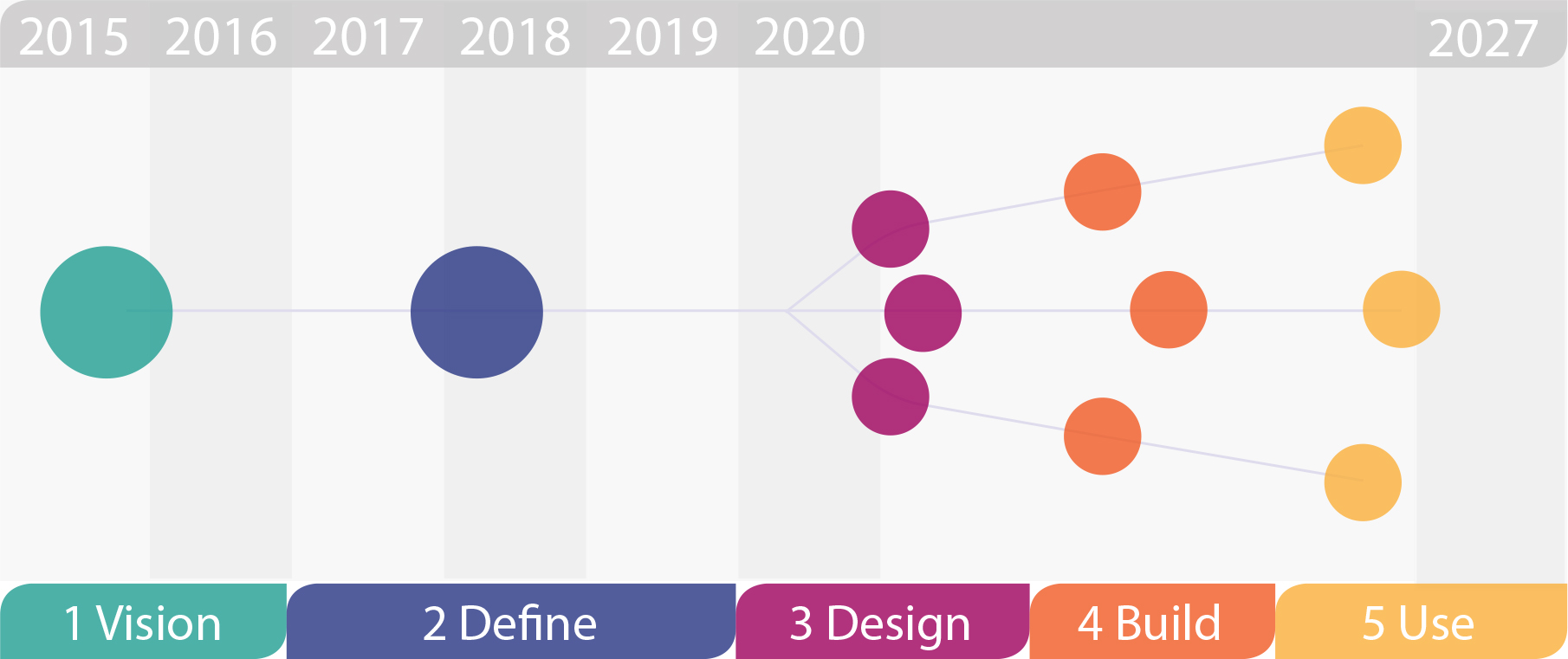Phases - Campus development
Phases of campus development
Phases of campus development
Phases picture

Phases of campus development
Phase 1 - Vision
In the first phase, the strategic direction for campus development is decided. During this phase, NTNU's vision, principles and success criterias for campus are defined. Those involved in the current campus development are informed and familiarized with the overall strategic framework. In addition, the overall area where new buildings are to be established is decided.
Phase 2 - Define
In the second phase, the overall plan for designing a campus is established. The plan defines how different subjects and functions should be located, and defines which disciplines should go where. In addition, all sub-concepts for the design of area types are confirmed. A partial concept is the framework for different types of areas. For example, learning area, laboratory structure, workplace design, functions in hubs, outdoor spaces and connections between hubs.
Phase 3 - Designing
In the third phase, the description of rooms and functions is directly linked to the organizational units that will use them. During this phase the need for functionality in individual projects will be described. The functional needs of specific units and groups are defined in a room and function program. The room and function program is the foundation architects and contractors uses to design and project the relevant buildings and areas.
Phase 4 - Build
In phase four construction starts. The phase results in fully equipped buildings. An important part of the phase will be quality assurance and the transfer of knowledge from NTNU's organization whom will use the premises to the executing contractors who build them. This is also the phase in which the organization prepare to use new premises.
Phase 5 - Use
In the fifth phase, new premises have been put into use. The responsibility for buildings and use is transferred from the project organization to the operations organization. The phase begins with a trial run, where it will be possible to test and reveal any need for adaptations, either organizationally or by adjusting functionality.
